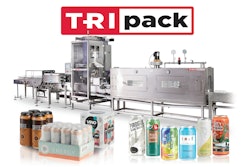In recent years, there has been a parade of lawsuits against various brand owners about the amount of slack-fill in their packaging. The majority of the defendants have been from the food industry, although other categories are not exempt.
The federal regulatory framework associated with slack-fill packaging is as follows: the Food, Drug, and Cosmetic Act (FDCA) grants regulatory powers to the Food & Drug Administration (FDA); FDA regulations are published in the Code of Federal Regulations Title 21 (21CFR); and, 21CFR §100.100 defines slack-fill as, “the difference between the actual capacity of the container and the volume of product contained therein.”
According to the FDCA, a food is misbranded if its container is “made, formed, or filled” misleadingly. Code of Federal Regulations 21CFR §100.100 builds on the “filled” requirement, namely, “A container that does not allow the consumer to fully view its contents shall be considered to be filled as to be misleading if it contains nonfunctional slack-fill.”
Slack-fill is not inherently bad, however. By mentioning nonfunctional slack-fill, 21CFR §100.100 implies the existence of functional slack-fill, which does not constitute misbranding. The Section goes beyond implying and enumerates six exceptions.
(1) The slack-fill is needed for product protection. Example: fragility (or other characteristics) of the product renders it vulnerable to damage if filled more compactly.
(2) The slack-fill is the result of machinery requirements. Example: the filling machine is engineered and calibrated for a given package size, at a given contents volume.
(3) The slack-fill is the result of unavoidable product settling. Example: vibrations encountered throughout the supply chain, and even at the filling station, reduce the fill line.
(4) The slack-fill allows the package to perform a specific function. Example: the package plays a role in the food’s preparation or consumption, as does a single-serving cereal bowl.
(5) The slack-fill is due to a reusable package. Example: the package is commemorative, promotional, or otherwise intended for post-consumption reuse.
(6) The slack-fill is needed for functions that the package could not fulfill were it of a greater fill level or of a smaller size. Examples: Informational requirements for labels, ergonomic considerations for manual handling, anti-pilferage features for small valuables, and tamper-evident features, require a given package size and fill level.
By necessity, then, the associated lawsuits allege that there is slack-fill that does not meet any of the aforementioned exceptions. That said, federal regulations do not provide individual consumers the means to sue. That has to be done on the state level, under consumer-protection laws that are modeled after federal regulations.
So far, the lawsuits have been concentrated in a few states. Those states include California and New York, what with their history of being at the vanguard of various societal trends. It’s conceivable, therefore, that other states will pass consumer protection laws that enable slack-fill lawsuits. An individual state can bring suit through its attorney general, for example. However, an individual consumer has to be part of a class-action suit.
The food-specific federal regulations do not necessarily exempt suits against other product categories. That’s because such suits can be brought under the more general federal prohibition against misbranding, under which nonfunctional slack-fill falls. In theory, at least, any brand owner can be slapped with a lawsuit if its packaging is opaque and contains slack-fill alleged to be nonfunctional.
Such lawsuits are not decided solely on whether the slack-fill is determined to be nonfunctional, though. Even under that circumstance, there is a standard to be satisfied. It must be shown that the nonfunctional slack-fill would be misleading to a reasonable consumer, whose experience and expectations are relevant to the subject product category.
How a brand owner responds to a lawsuit is the business of its legal department or its outside counsel. Nonetheless, the strategy will involve input from company employees who have packaging-related titles and duties. It’s an unavoidable reliance due to those employees’ involvement in the decisions that led to the at-issue packaging. Whatever the collaboration between legal and packaging, it qualifies as reactive.
Consideration should be given to a proactive mindset. In it, the brand owner’s exposure to slack-fill lawsuits is analyzed for opportunities to minimize it. It’s a worthwhile endeavor for a number of reasons. One is that the brand owner’s integrity is under attack, since its practices are being portrayed as misleading and deceptive. Another is that the resolution of a lawsuit brought in one state does not automatically shield the brand owner from one brought in another state. One more is that, given the reach of various social media platforms, anything negative carries the threat of going viral.
Next month’s column will discuss how to make a slack-fill strategy a component of packaging management.
Sterling Anthony, CPP, is a consultant specializing in marketing, packaging, logistics, and ergonomics. 100 Renaissance Center-Box 176, Detroit, MI 48243; 313/531-1875; [email protected].



























